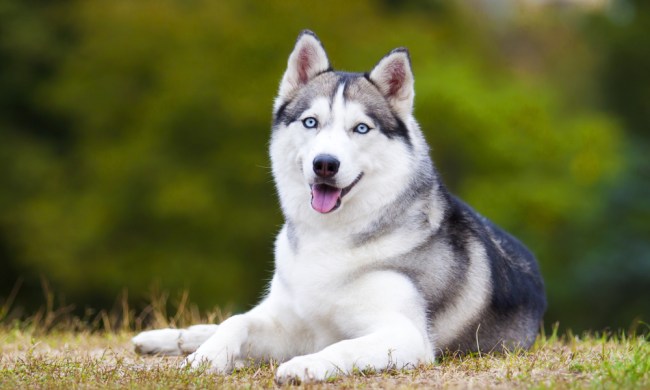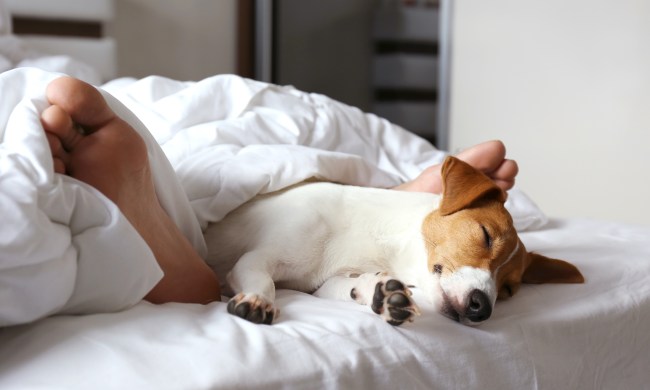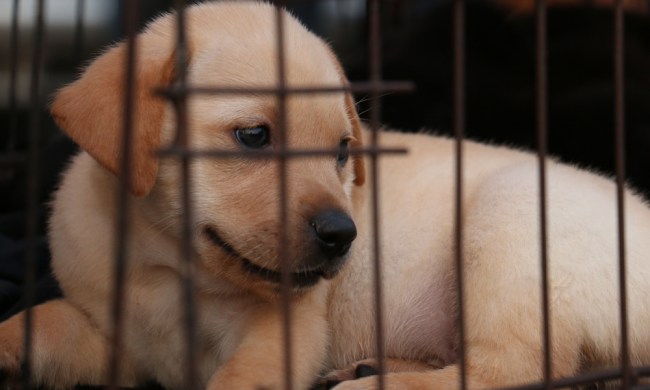Despite dogs' natural love for going on walks, puppies don't know how to walk on a leash purely on instinct. There's a lot of work you'll need to do with your new furry friend, but with some repetition and positive reinforcement, this process doesn't have to be a pain.
Leash training a puppy can be broken down into small steps — just 5 to 30 minutes of your day — starting with introducing a collar or harness to his daily routine. This will help both you and your buddy build confidence around trying something new, but it will also make each step a little less scary — so don't sweat! Even if it's your first time leash training a puppy, you can absolutely do this with some patience, love, and a handful of treats.
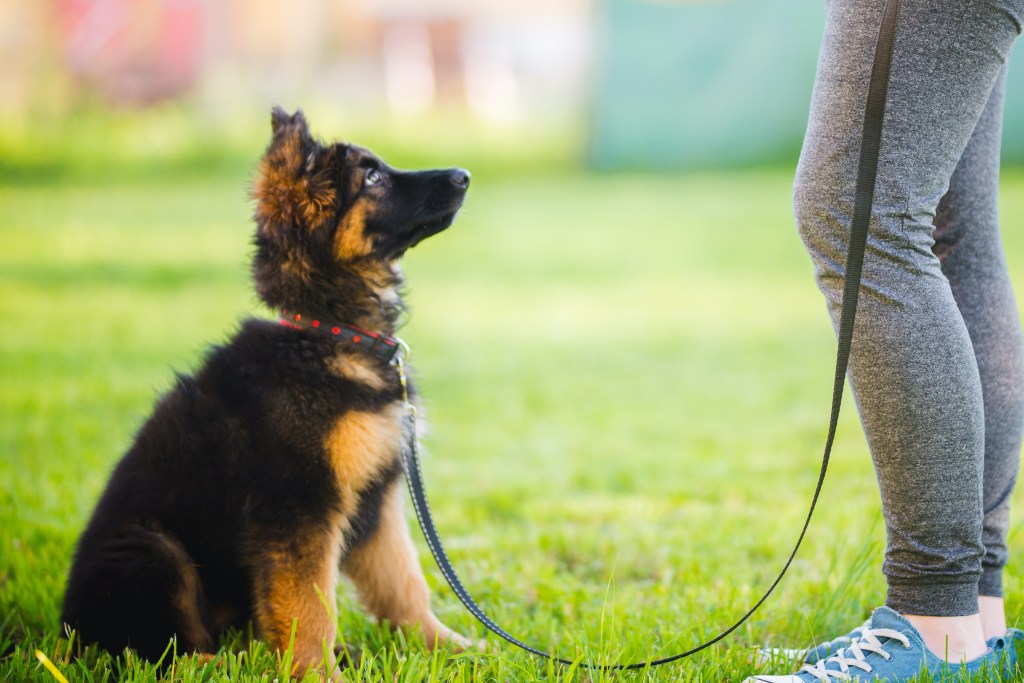
When to start leash training a puppy
Good news — you don’t need to wait to start leash training your new puppy. Once a pooch is old enough to go to her new home, she’s usually able to try new things — like wearing a harness and leash — for a short amount of time. Don’t expect to go out for walks on day one, but instead work up to longer treks.
While your pup’s young age can make training a little challenging at first, incorporating a few small tips will go a long way. Keeping your sessions short, for example, will help your dog stay attentive and interested. For a puppy, 5 to 15 minutes is an ideal duration for leash training, though it can vary from dog to dog or even day to day!
Another challenge is that younger puppies don’t have all their shots yet, so they can’t (or shouldn’t) venture out into the world. Until then, though, get your new best friend used to wearing a collar, harness, and later a leash.
Your pup should learn to associate his new accessories with positive feelings, so your best plan is to casually put them on while Fido is doing something he loves — whether that’s eating, playing, or getting some extra rubs. According to the American Kennel Club (AKC), you can also try using rewards like treats and toys to lure an uncertain pup into a collar or harness.
Make sure to keep your fur baby entertained and happy while she’s wearing her harness. Don’t overdo it either — stress will only make future attempts more difficult, and you can always try again later.
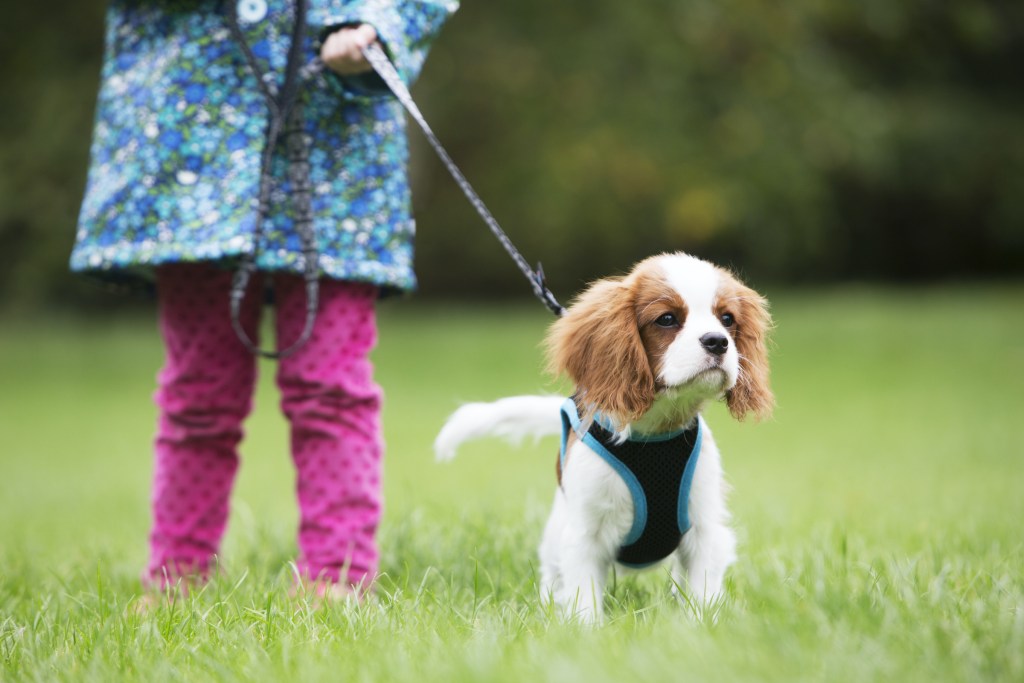
How to train your puppy to walk on a leash
After a week or so of your pup getting used to a harness, you can try clipping on a leash.
Step 1: First, let them sniff the leash, then clip it on. You can reward them for letting you clip it on for positive reinforcement.
Step 2: Let them drag it around for a few minutes to warm up to the idea, but then start using the leash as intended. The sooner you begin holding it and staying with your dog, the sooner you’ll be exploring the neighborhood.
Step 3: The AKC also suggests preparing for your first walk by teaching your puppy a cue word or sound that signals them to come to you. Whether you use a clicker or your voice, practice making the sound and rewarding your dog for turning toward you.
Step 4: Once they have that down, you can start rewarding them for coming to you, too. The AKC recommends you make your cue sound, then lure your pup toward you with a treat as you back up a few steps.
Step 5: Practice, practice, practice!
By practicing this daily, and slowly increasing the distance your pup walks to get the treat, you’ll have taught him a cue word to follow you before even getting outside. This will come in handy should you run into any distractions — and you will!
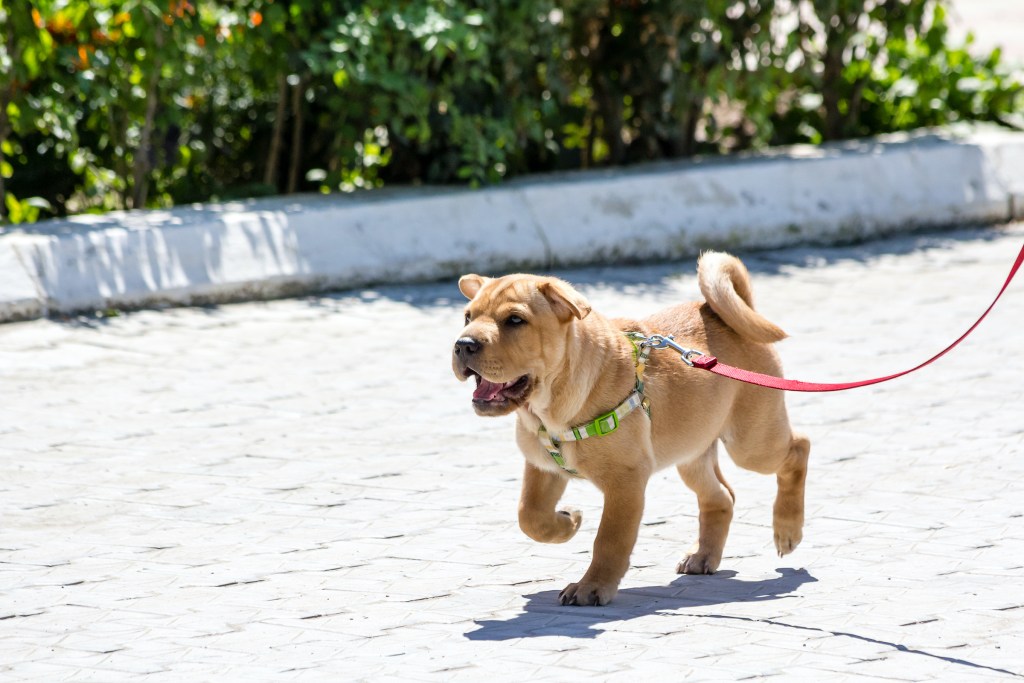
How to leash train a puppy outside
When you feel ready to move outside — be patient! Even your backyard is filled with all kinds of new smells and distractions, as the AKC reminds us, so you may move a lot slower than you did inside. Some sniffing is great if you’re out for a potty break, but if you’re purely working on leash training a puppy, it’s best to keep them walking with you for now. Remember to use your cue word and treats!
In the end, practice really does make perfect. In addition to your journeys, keep up with your dog’s obedience training, as this will come in handy on walks. After all, safety comes first when out and about! Remember to reward any behaviors you like to see and ignore or redirect any unwanted ones. Treats are useful for this too, especially if your puppy is food motivated.
When it comes to leash pulling, which is a common issue at first, don’t try to pull your pup back toward you. Instead, suggests the AKC, act like a tree — stand firmly in place and don’t give in to your dog’s excitement. When she relaxes and stops pulling on the leash, you can keep walking.

Tips for calmer walks with your puppy
We've taken you through the basics, but remember that you'll walk your buddy A LOT during her life. Try out these tips to make it an enjoyable experience for both of you.
Go for a walk every day. Of course, there may be a rare occasion when your pup isn't up for it because of medical reasons, but in general, daily walks will keep her well exercised and used to the routine.
Find the right length. Too long and she'll be exhausted, even dangerously so. Too short and she'll feel unsatisfied (not to mention, still popping with energy). Find a good medium for your main jaunt with shorter potty breaks between.
Teach her to stand next to you. A dog walking 10 feet ahead can cause problems, especially in crowded areas. You want her close enough that you have verbal and physical control but you also should allow her to explore.
Change up the route. You wouldn't want to watch the same movie over and over. That's basically what you're doing to your dog when she goes on an identical walk every day. Let her check out different spots to keep her attention.
Have fun. You should both enjoy your stroll. Take advantage of the outdoors to get in your own mini work out or listen to music. Consider joining other dogs in the neighborhood if they get along with your beastie.
There’s no way around it — leash training a puppy, or any dog really, is a process! It’s a rewarding and useful process, though, so you should definitely take it on as soon as your new fur baby comes home. Before you know it, everyone will be so impressed with your well-mannered dog, and you’ll be so glad you were able to put in the time. Good luck, pet parents!


